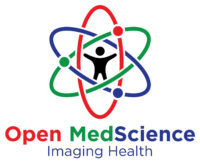The Journal of Diagnostic Imaging in Therapy (JDIT) was a peer-reviewed journal published by Open MedScience. It focused on the intersection between advanced diagnostic imaging and therapeutic interventions, with particular relevance to nuclear medicine, radiotherapy, and clinical imaging applications. Though the journal is no longer active, it played a significant role in its field and laid the foundation for Open MedScience’s current publishing strategy.
Aims and Scope
JDIT was established to meet the increasing demand for a dedicated publication that addresses the role of imaging technologies in therapy. The journal served an interdisciplinary audience of clinicians, researchers, and technical specialists. It covered a wide range of topics, including:
- Image-guided therapy
- PET, SPECT, CT and MRI in treatment planning
- Radiopharmaceuticals and molecular imaging
- Dosimetry and radiotherapy innovations
- Technical developments in diagnostic and therapeutic devices
JDIT particularly encouraged applied research with clinical relevance, as well as early-phase studies that demonstrated technical feasibility or introduced new imaging methods for therapeutic use.
Peer Review and Editorial Standards
The journal maintained a rigorous double-blind peer review process. Each article was reviewed by subject matter experts with academic or clinical backgrounds relevant to the topic of the submission. Reviewers evaluated submissions for scientific validity, originality, and clarity. Constructive feedback was provided to help authors revise and improve their work.
The editorial board comprised professionals from a broad range of disciplines, including:
- Radiology and nuclear medicine
- Oncology and medical physics
- Radiopharmaceutical science
- Biomedical engineering
This range of expertise ensured that all manuscripts were assessed fairly and in accordance with best practice standards.
Formats and Multimedia
To enhance accessibility and educational value, JDIT accepted a variety of content types:
- Original research articles
- Case studies and technical reports
- Review articles and invited commentaries
- Short communications and clinical notes
Authors were also encouraged to submit supplementary materials such as:
- High-resolution imaging datasets
- Methodological appendices
- Video abstracts and demonstrations
This multimedia approach was intended to help readers better understand complex procedures and imaging protocols.
Ethical and Scientific Transparency
JDIT adhered to international guidelines for publication ethics, including those established by the Committee on Publication Ethics (COPE) and the International Committee of Medical Journal Editors (ICMJE). Authors were expected to:
- Register clinical trials or systematic reviews
- Disclose conflicts of interest
- Provide detailed methods and reproducible data
- Acknowledge all sources of funding
These policies helped maintain the integrity and credibility of the journal, promoting transparency across all stages of publication.
Closure and Legacy
After several years of successful publication, Open MedScience made the strategic decision to discontinue JDIT. This move reflected a broader shift towards more flexible and interdisciplinary publishing models. Rather than maintaining a narrowly focused journal, Open MedScience expanded its scope to encompass a broader range of medical and scientific topics.
The closure of JDIT was not a response to poor performance or lack of interest, but rather a natural evolution in response to the changing needs of contributors and readers.
Archiving and Accessibility
Although JDIT is no longer accepting new submissions, its previously published content remains available. These archived articles continue to serve as a valuable resource for researchers and clinicians in the fields of diagnostic imaging and therapy. The commitment to open access ensures that this content remains freely accessible to all.
Influence on Open MedScience Today
The legacy of JDIT is still evident in the way Open MedScience operates. Many of the values that guided the journal—scientific integrity, editorial independence, and accessibility—are central to the current platform. While the scope of publications has broadened to include digital health, pharmacology, and medical technology, the emphasis on quality and rigour remains unchanged.
Conclusion
The Journal of Diagnostic Imaging in Therapy played a vital role in providing a dedicated space for high-quality, peer-reviewed research in a specialised field. Its contribution to the scientific community, particularly in integrating imaging into therapy, remains relevant. Although it is no longer an active journal, its influence lives on through the editorial practices and publishing ethos of Open MedScience.
You are here: home »